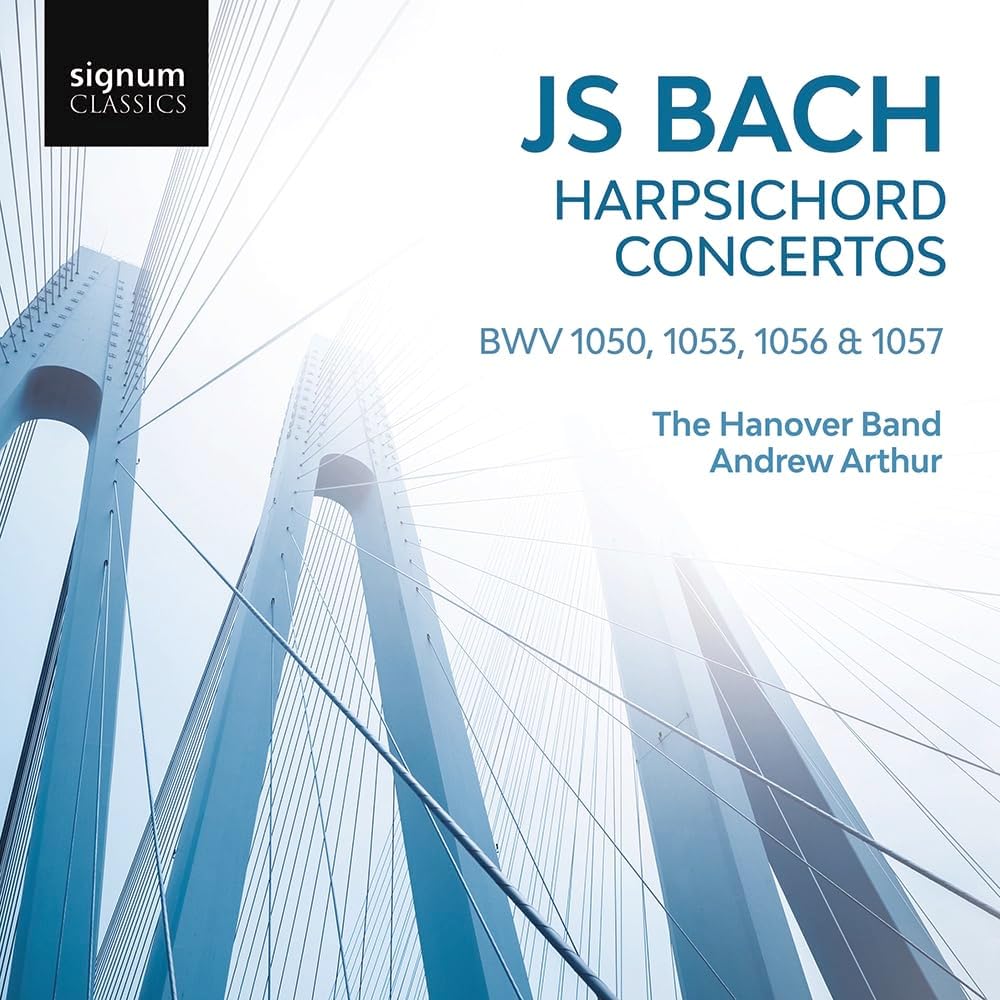The Hanover Band, Andrew Arthur
68:34
Signum Records SIGCD764
When the first volume of Andrew Arthur’s harpsichord concertos with The Hanover Band (which I reviewed for the EMR in July 2022) was recorded, they also recorded the concertos that make up volume II. So the admirable acoustic of St Nicholas, Arundel and Trinity Hall’s excellent harpsichord by Andrew Garlick, built in 2009 (after a Jean-Claude Goujon of 1748), are common to both. A major key to the success of these recordings is the singing quality of this harpsichord in this acoustic under the fluid coaxing of Andrew Arthur’s touch.
This second volume begins with BWV 1050, which we know as the fifth Brandenburg Concerto, with its ground-breaking harpsichord ‘cadenza’, and brings the wonderful Rachel Brown into the ensemble to join Andrew Arthur and the string players of the Hanover Band, led by the spirited, agile and mellifluous playing of Theresa Caudle – this time properly acknowledged in her crucial role as the first violin. What makes these recordings so special is the natural balance between the instruments – harpsichord, woodwind and strings alike. This is particularly evident in the final concerto on the disc – BWV 1057, the version in F of the fourth Brandenburg, with two recorders (Rachel Brown and Rachel Becket) – where in this 1738 version the florid violin part of Brandenburg 4 is recast for the harpsichord and the amazing final fugal movement offers us every conceivable instrumental combination. There is so much to be learned, as always, by comparing closely Bach’s later versions with his earlier ones.
That kind of comparison is also offered by the other concertos. The Concerto in E (BWV 1053) draws each of its movements from one of Bach’s cantatas. The opening allegro is a version of the Sinfonia from Cantata 169 (1726) Gott soll allein, while 169.v, the aria Stirb in mir, Welt for alto, strings and obbligato organ is the model for the middle movement, a lyrical Siciliano. The last movement is adapted from the opening Sinfonia of BWV 49, another cantata from 1726. Were these instrumental sinfonias that Bach used instead of an opening chorus in a number of cantatas in the autumn of 1726 already in existence as concerto movements for a solo violin, like others that became harpsichord concertos in due course?
The intimate Concerto in F sharp minor is perhaps the biggest treat of all. The tempo in the first movement is moderate, and the alternation of pizzicato and arco in the string parts underlines the quest to discover where we are headed with the angular opening theme. The answer is to the second movement, where the magical Sinfonia for oboe and strings that opens Cantata 156, Ich steh mit einem Fuß im Grabe appears in the unlikely key of A flat. Here again, the acoustics give the pizzicato accompaniment a surprisingly resonant bloom, capped by their final arco bar. Like the first movement, there are repeated echo effects within which the dialogue between the first violin and the harpsichord establishes their natural duetting relationship.
In this second volume, I have become more aware of the crucial part that the acoustics of St Nicholas, Arundel play in shaping the sound in these recordings. This is perhaps most evident in the slow movement of BWV 1050, where as well as the perfectly articulated overlapping threads of all three players, the expressive lift after the first quaver beats in bars 27 and 37 in the harpsichord gives this movement such finesse; and having a two-manual instrument that can revert to basso continuo mode helps articulate the structure as well. The acoustics help establish the tonality so splendidly in the opening of the last movement too. It begins with the violin playing a clear, rounded rhythmic entry that is mirrored by the bloom of the traverso, so that when the harpsichord (in two parts) joins them we are well prepared for the tutti, and ready to appreciate the subtlety of the bass line in those sections where the violone is silenced and the cello plays alone.
Enchanting too is the way every player contributes. Listen to the wonderful viola at bar 147 in this last movement – and in bars 181 ff, and the cello in 192 ff: this is real playing with each other. How lucky Andrew Arthur is to have such fine companions in making these wonderful recordings, where the harpsichord is never stridently soloistic but always the first among equals.
I shall enjoy returning to this recording for a long time. It is such responsive, unshowy but fluid, utterly musical playing. This is how to hear Bach, and you should get it at once.
David Stancliffe
